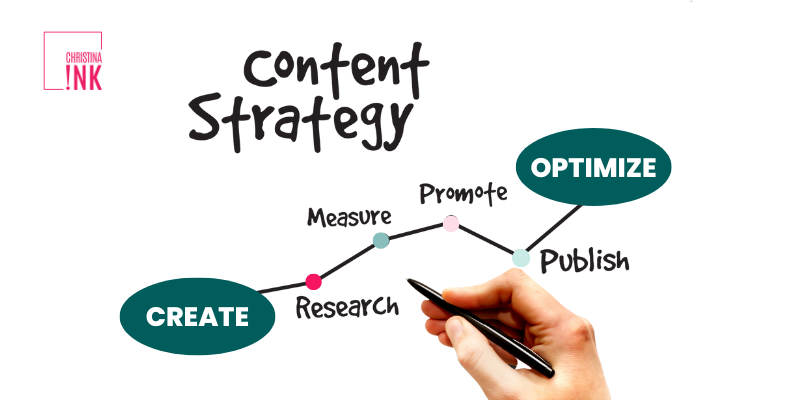Leveraging content marketing for your budding e-commerce brand is a powerful resource every seller should invest in, in 2022. Content marketing has to be clear with well-defined copywriting to reach a particular goal, like increased audience engagement, increased conversion, or pumping up your bottom line. The challenge is knowing how to create content that generates leads. You need a clear and effective e-commerce content marketing strategy that builds community, bolsters brand awareness, and attracts the right leads to stand out from redundant content saturating the internet. This step-by-step guide will teach you everything you need to know about the best e-commerce content marketing strategies. Let’s get started.
What you’ll learn:
- The benefits of an e-commerce content marketing strategy
- How a content strategy can help your Amazon FBA business
- How to create a content marketing strategy
- How to align your content strategy to your Amazon business
The Benefits of an E-commerce Content Marketing Strategy

Formulating an effective e-commerce content marketing strategy is easier said than done. There are a few aspects to consider for a strategy to be effective for Amazon sellers.
- Brand Differentiation – Promote your brand message through your content. There’s a high chance you’re up against an army of competitors on Amazon. A good e-commerce content marketing strategy carries consistent brand messaging across channels. Defining your unique selling proposition, product benefits, and calls to action can help you attract customers on and off Amazon.
- SEO – Content marketing is a waiting game. It’s unlikely that your content will produce instant results. Design a strategy that can survive the test of time by choosing pillar pieces of evergreen content to promote on your website and specific channels. Evergreen content stays relevant for longer periods and assists in long-term SEO goals.
- Market Research – It’s all in the foundation. Your e-commerce content marketing foundation can make or break your content marketing efforts. A solid strategy should include audience demographics, platform type, and season. A robust strategy lays the foundation for presenting your brand for maximum impact on your audience.
How An E-commerce Content Marketing Strategy Can Help Your Amazon FBA Business
An effective content strategy acts as a roadmap guiding you through the challenging process of creating unique content that attracts and converts customers in your niche. But that’s not all. An effective content marketing strategy breaks down your brand’s unique advertising and sales goals on and off Amazon. You can plan and customize your content to meet urgent and standard marketing needs. Effective content marketing provides your target audience with relevant and engaging information that subtly sells your brand without sounding like a sales pitch. Your content writing team can help you rank for specific keywords, helping boost your brand in search results on Amazon and Google. When you organically rank for high-performing keywords, you can bypass the traditional advertising spend you’d normally require to get the same results.
How a content marketing strategy can help boost your conversions:
- A good content marketing strategy forms the foundation of your brand messaging across all channels, including Amazon.
- A solid content strategy funnels potential customers to the pipeline’s end goal on the Amazon product detail page and your website.
- An effective e-commerce content marketing strategy takes the guesswork out of content creation.
- When leveraged effectively, e-commerce content marketing can help resonate, inform, guide, and also manipulate your audience to do exactly what you ask of them.
How to Create an Effective E-commerce Content Marketing Strategy

Content marketing focuses on creating consistent content that helps attract and retain your target audience. The end result is increased customer engagement which helps drive your bottom line. Below are steps to creating an effective content marketing strategy that can work for your Amazon brand.
#1 Leverage a centralized location to showcase your content
Since content marketing takes time to pay off, it’s best to have a robust plan to help organize your content. Content hubs consolidate all content related to a specific topic in one place. Not only do content hubs boost organic search traffic, but they significantly improve the user experience on your website. A Content hub can include social media content, evergreen blog posts, instructional videos, and printable and downloadable PDFs. Amazon sellers can create content hubs as their businesses expand to help inform, guide, educate and relate to their audience. Check out the content hub, The Red Bulletin, by Red Bull.

#2 Build your content around a specific target audience
Figuring out your target audience and what makes them tick is crucial when creating a content strategy. The goal is to attract potential customers while showcasing why your brand offers the best deals and services. The good news is that targeted content will resonate with significant portions of your audience, who will share it within their social networks. The result is increased brand recognition as more people flock to your content.
#3 Leverage the power of storytelling to connect with your customers on an emotional level
We all love stories, and that’s exactly why storytelling is essential in content marketing. Stories draw customers into your brand’s universe, allowing them to connect with your journey on an emotional level. This is a big deal, especially considering how hard it is to earn customer loyalty in today’s competitive market. Moreover, you can spice things up by crafting content around customer stories. This approach goes a long way in making your brand relatable to your target audience.
#4 Create informative content that educates more rather than selling
No one loves a slick salesperson. The last thing your content needs is to come across as a sales pitch. The best way to counter this is by creating evergreen content that educates your audience on various aspects of your brand. The upshot is that you can use popular search terms as a foundation to create multiple posts.
#5 Create an effective content distribution strategy
Creating captivating content is only half of the struggle; your content management strategy should account for distribution. An effective distribution strategy should cover organic and paid channels. Consider frequency in distribution and methods to do so. Paid ads are an option, but organic visibility is where it’s at.
#6 Leverage the power of user-generated content
A customer will likely trust a brand if most of the content they see is from other users. Your audience will resonate with content that shows real people interacting with your products rather than sales pitches. Most of the time, airbrushed photos and studio video shoots often come across as stage-managed. Customer reviews, product demos, unboxing videos, and testimonials from past customers help build trust because they are authentic.

#7 Regularly analyze your content performance
Regular analysis of content performance is a core element of any successful content management strategy. You’ll get to gauge the impact of your content and gain insight into the kind of content that resonates most with your audience. The best part is that you can track content performance in real-time using an analytics tool. Regular analysis can help you improve your content and adapt your strategy to fit the unique needs of your audience.
How to Align Your Content Marketing Strategy to Your Amazon Brand
Aligning your e-commerce content marketing strategy to your Amazon brand ensures clear communication with potential buyers. The alternative is conflicting content that confuses buyers and negatively affects conversion. You can align your content marketing strategy to your Amazon brand by:
- Leveraging your Amazon buyer: Find the perfect balance between pushing unique content ideas and meeting your customers’ needs. You should drop any content idea that isn’t interesting or educational and doesn’t resonate with specific stages of the buyer journey.
- Holding true to your brand guidelines: Brand guidelines help maintain a uniform appearance and tone, across channels, including your Amazon product listing. A brand guide keeps your content creators on the same page on crucial aspects such as messaging, brand identity, and brand purpose.
- Creating an SEO plan that’s effective in driving traffic to key places: Content is only effective if it’s visible. That means you’ll need a keyword strategy on and off Amazon. Leverage SEO strategies based on particular marketplaces or channels and follow best practices like avoiding keyword stuffing your content.
Content is King, On and Off Amazon
Content marketing isn’t about creating a few blog posts or using videos and images in your Amazon product listings. Content marketing sets the stage for how you connect with your audience, what you share, and the value you offer your customers and audience. To leverage content marketing effectively, you’ll want to remember to track and measure the performance of your campaigns for the best results. If you’re an e-commerce seller struggling to build an audience and experiencing a sales slump, we can help. We build e-commerce content marketing strategies to help sellers realize their full brand potential. Contact us today for a free 30-minute content strategy call.

LIKE THIS ARTICLE?